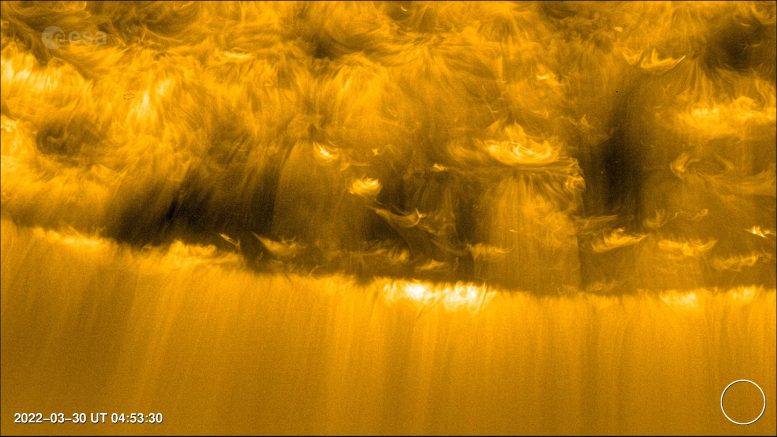
New findings from the Solar Orbiter mission have pinpointed the origin of the slow solar wind in regions where the Sun’s magnetic field lines reconnect, offering deeper insights into solar dynamics and potential impacts on Earth. Credit: ESA & NASA/Solar Orbiter/EUI Team; acknowledgment: Lakshmi Pradeep Chitta, Max Planck Institute for Solar System Research
The Solar Orbiter is helping identify the source of the ‘slow’ solar wind, advancing our knowledge of solar processes and their influence on space weather.
Researchers have made a breakthrough in understanding the ‘slow’ solar wind’s origins using the Solar Orbiter spacecraft. By analyzing the solar wind samples and capturing images of the Sun’s surface, scientists have identified where the slow solar wind begins and how it escapes into space. This discovery enhances our understanding of solar phenomena and their effects on the broader solar system.
Scientists have made significant progress in uncovering the mysterious origins of the ‘slow’ solar wind, using data collected during the Solar Orbiter spacecraft’s first close journey to the Sun.
Solar wind, which can travel at hundreds of kilometers per second, has fascinated scientists for years, and new research published today (May 28) in the journal Nature Astronomy, is finally shedding light on how it forms.
Solar wind describes the continuous outflow of charged plasma particles from the Sun into space – with wind traveling at over 500 km per second known as ‘fast’ and under 500 km per second described as ‘slow’.
When this wind hits the Earth’s atmosphere it can result in the stunning aurora we know as the Northern Lights. But when larger quantities of plasma are released, in the form of a coronal mass ejection, it can also be hazardous, causing significant damage to satellites and communications systems.
Despite decades of observations, the sources and mechanisms that release, accelerate, and transport solar wind plasma away from the Sun and into our solar system are not well understood – particularly the slow solar wind.
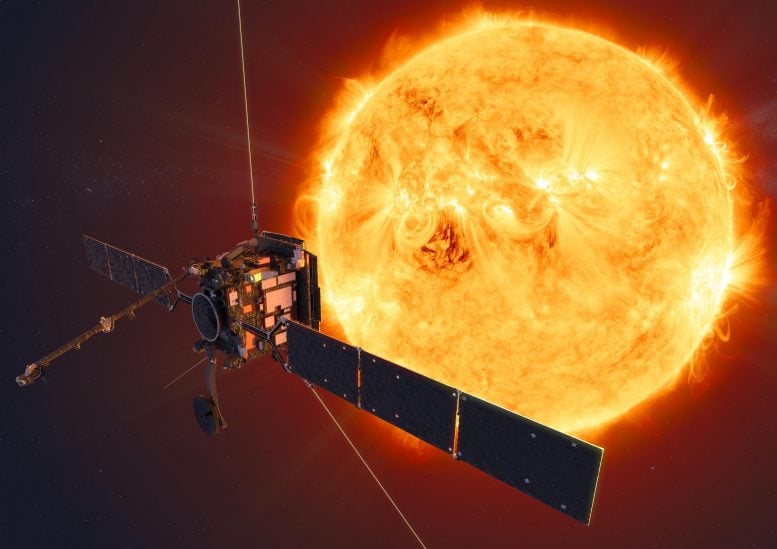
Solar Orbiter’s purpose is to study the Sun up close and personal, focusing on understanding the solar wind, the Sun’s magnetic fields, and the heliosphere—the vast bubble of charged particles the Sun emits into space. Equipped with ten scientific instruments, the spacecraft captures high-resolution images and collects data on the Sun’s atmosphere, helping to link solar activity directly to phenomena in our solar system. This mission is critical for advancing our knowledge of space weather and its effects on Earth. Credit: ESA/ATG medialab
Solar Orbiter Mission Insights
In 2020 the European Space Agency (ESA), with support from NASA, launched the Solar Orbiter mission. As well as capturing the closest and most detailed images of the Sun ever taken, one of the mission’s main aims is to measure and link the solar wind back to its area of origin on the Sun’s surface.
Described as ‘the most complex scientific laboratory ever to have been sent to the Sun’, there are ten different scientific instruments onboard Solar Orbiter – some in situ to collect and analyze samples of the solar wind as it passes the spacecraft, and other remote sensing instruments designed to capture high quality images of activity at the Sun’s surface.

Solar Orbiter’s suite of ten science instruments that will study the Sun. There are two types: in situ and remote sensing. The in situ instruments measure the conditions around the spacecraft itself. The remote-sensing instruments measure what is happening at large distances away. Together, both sets of data can be used to piece together a more complete picture of what is happening in the Sun’s corona and the solar wind. Credit: ESA-S.Poletti
Tracing the Origins of Slow Solar Wind
By combining photographic and instrumental data, scientists have for the first time been able to identify more clearly where the slow solar wind originates. This has helped them to establish how it is able to leave the Sun and begin its journey into the heliosphere – the giant bubble around the Sun and its planets which protect our solar system from interstellar radiation.
Dr. Steph Yardley of Northumbria University, Newcastle upon Tyne, led the research and explains: “The variability of solar wind streams measured in situ at a spacecraft close to the Sun provide us with a lot of information on their sources, and although past studies have traced the origins of the solar wind, this was done much closer to Earth, by which time this variability is lost.
The Role of the Sun’s Corona
“Because Solar Orbiter travels so close to the Sun, we can capture the complex nature of the solar wind to get a much clearer picture of its origins and how this complexity is driven by the changes in different source regions.”
The difference between the speed of the fast and slow solar wind is thought to be due to the different areas of the Sun’s corona, the outermost layer of its atmosphere, that they originate from.
Magnetic Fields and Solar Wind Escape
The open corona refers to regions where magnetic field lines anchor to the Sun at only one end, and stretch out into space on the other, creating a highway for solar material to escape into space. These areas are cooler and are believed to be the source of the fast solar wind.
Meanwhile, the closed corona refers to regions of the Sun where its magnetic field lines are closed — meaning they are connected to the solar surface at both ends. These can be seen as large bright loops that form over magnetically active regions.
Occasionally these closed magnetic loops will break, providing a brief opportunity for solar material to escape, in the same way it does through open magnetic field lines, before reconnecting and forming a closed loop once again. This generally takes place in areas where the open and closed corona meet.
Testing Theories With Solar Orbiter
One of the aims of Solar Orbiter is to test a theory that the slow solar wind originates from the closed corona and is able to escape into space through this process of magnetic field lines breaking and reconnecting.
One way the scientific team were able to test this theory was by measuring the ‘composition’ or make up of solar wind streams.
The combination of heavy ions contained in solar material differs depending on where it has originated from; the hotter, closed versus the cooler, open corona.
Linking Solar Activities to Wind Streams
Using the instruments onboard Solar Orbiter, the team were able to analyze the activity taking place on the surface of the Sun and then match this with the solar wind streams collected by the spacecraft.
Using the images of the Sun’s surface captured by Solar Orbiter they were able to pinpoint that the slow wind streams had come from an area where the open and closed corona met, proving the theory that the slow wind is able to escape from closed magnetic field lines through the process of breaking and reconnection.
Insights on Solar Wind Composition
As Dr. Yardley, of Northumbria University’s Solar and Space Physics research group, explains: “The varying composition of the solar wind measured at Solar Orbiter was consistent with the change in composition across the sources in the corona.
“The changes in composition of the heavy ions along with the electrons provide strong evidence that not only is the variability driven by the different source regions, but it is also due to reconnection processes occurring between the closed and open loops in the corona.”
International Collaboration and Future Plans
The ESA Solar Orbiter mission is an international collaboration, with scientists and institutions from around the world working together, contributing specialist skills and equipment.
Daniel Müller, ESA Project Scientist for Solar Orbiter, said: “From the beginning, a central goal of the Solar Orbiter mission has been to link dynamic events on the Sun to their impact on the surrounding plasma bubble of the heliosphere.
“To achieve this, we need to combine remote observations of the Sun with in-situ measurements of the solar wind as it flows past the spacecraft. I am immensely proud of the entire team for making these complex measurements successfully.
“This result confirms that Solar Orbiter is able to make robust connections between the solar wind and its source regions on the solar surface. This was a key objective of the mission and opens the way for us to study the solar wind’s origin in unprecedented detail.”
Among the instruments onboard Solar Orbiter is the Heavy Ion Sensor (HIS), developed in part by researchers and engineers from the University of Michigan’s Space Physics Research Laboratory in the department of Climate and Space Sciences and Engineering. The sensor was designed to measure heavy ions in the solar wind, which can be used to determine where the solar wind came from.
“Each region of the Sun can have a unique combination of heavy ions, which determines the chemical composition of a stream of solar wind. Because the chemical composition of the solar wind remains constant as it travels out into the solar system, we can use these ions as a fingerprint to determine the origin of a specific stream of the solar wind in the lower part of the Sun’s atmosphere,” said Susan Lepri, a professor of climate and spaces sciences and engineering at the University of Michigan and the deputy principal investigator of the Heavy Ion Sensor.
The electrons in the solar wind are measured by an Electron Analyser System (EAS), developed by UCL’s Mullard Space Science Laboratory, where Dr. Yardley is an Honorary Fellow.
Professor Christopher Owen, of UCL, said: “The instrument teams spent more than a decade designing, building and preparing their sensors for launch, as well as planning how best to operate them in a coordinated way. So it is highly gratifying to now see the data being put together to reveal which regions of the Sun are driving the slow solar wind and its variability.”
The Proton-Alpha Sensor (PAS), which measures wind speed, has been designed and developed by Paul Sabatier University’s Institut de Recherche en Astrophysique et Planétologie in Toulouse, France.
Together, these instruments make up the Solar Wind Analyser senor suite on board Solar Orbiter, for which UCL’s Professor Christopher Owen is the principal investigator.
Speaking about future research plans, Dr. Yardley said: “So far, we have only analyzed Solar Orbiter data in this way for this particular interval. It will be very interesting to look at other cases using Solar Orbiter and to also make a comparison to datasets from other close-in missions such as NASA’s Parker Solar Probe.”
The paper detailing the research will be published today in Nature Astronomy.
Reference: “Multi-source connectivity as the driver of solar wind variability in the heliosphere” by Stephanie L. Yardley, David H. Brooks, Raffaella D’Amicis, Christopher J. Owen, David M. Long, Deb Baker, Pascal Démoulin, Mathew J. Owens, Mike Lockwood, Teodora Mihailescu, Jesse T. Coburn, Ryan M. Dewey, Daniel Müller, Gabriel H. H. Suen, Nawin Ngampoopun, Philippe Louarn, Stefano Livi, Sue Lepri, Andrzej Fludra, Margit Haberreiter and Udo Schühle, 28 May 2024, Nature Astronomy.
DOI: 10.1038/s41550-024-02278-9

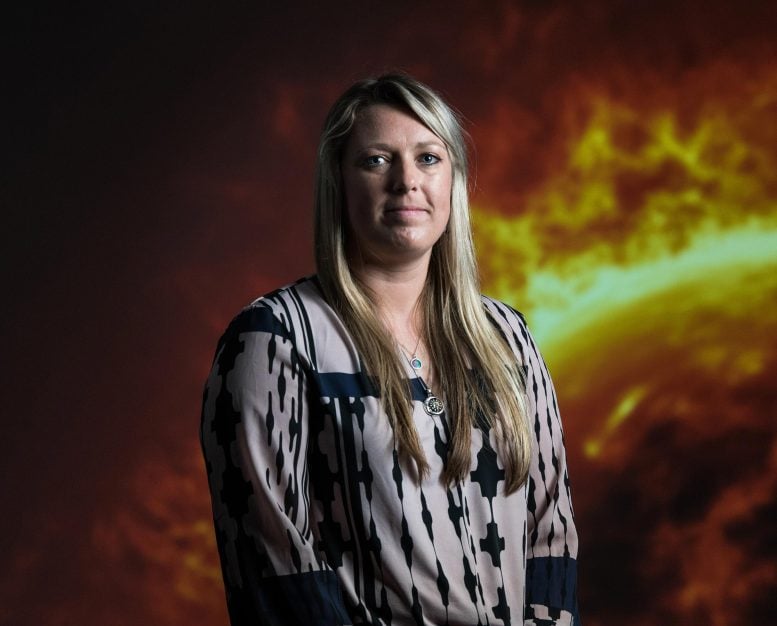






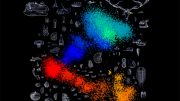
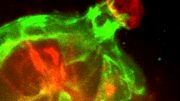
Be the first to comment on "“Slow” Solar Wind: Mysterious Origins Unmasked by Solar Orbiter"